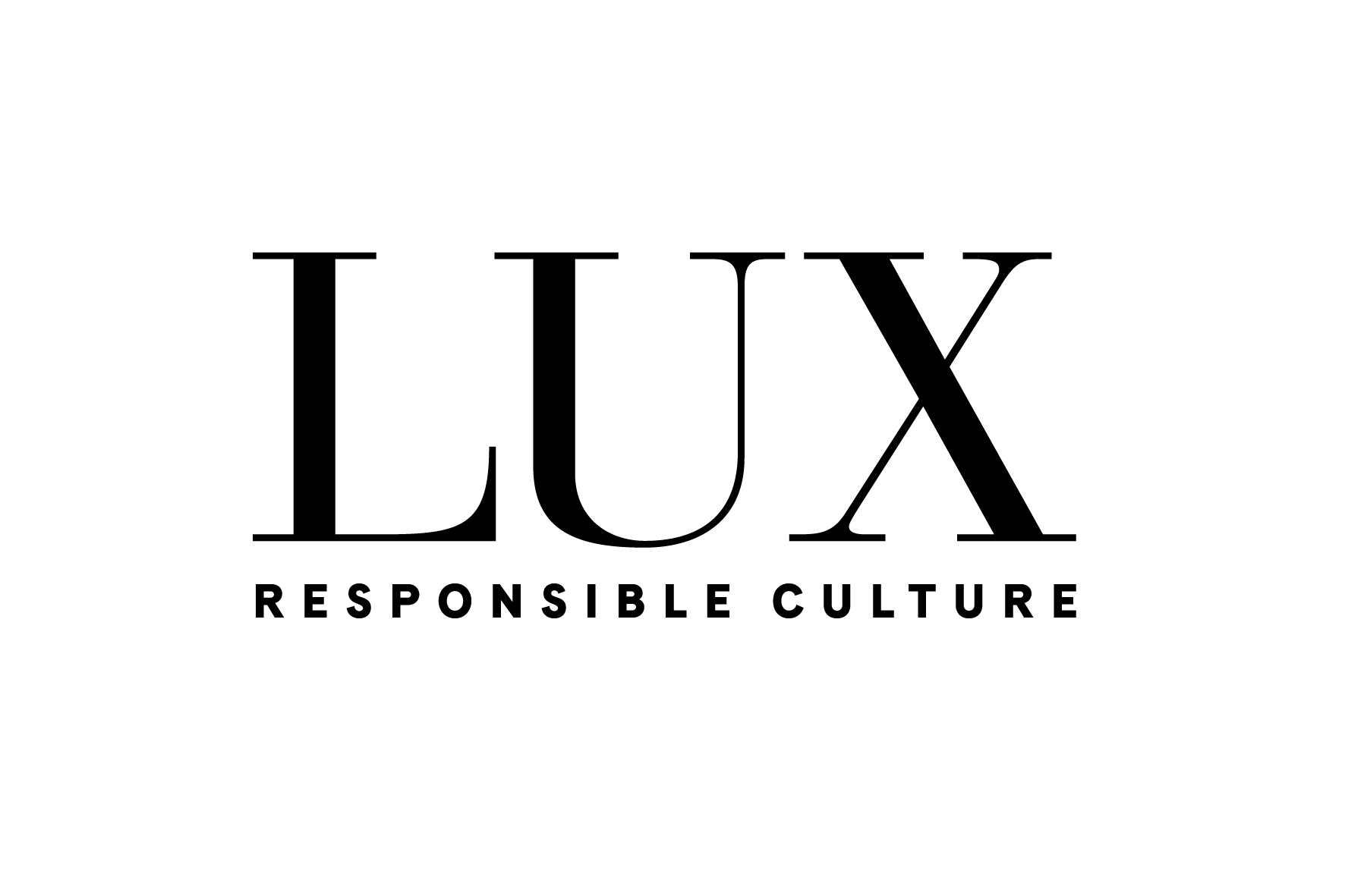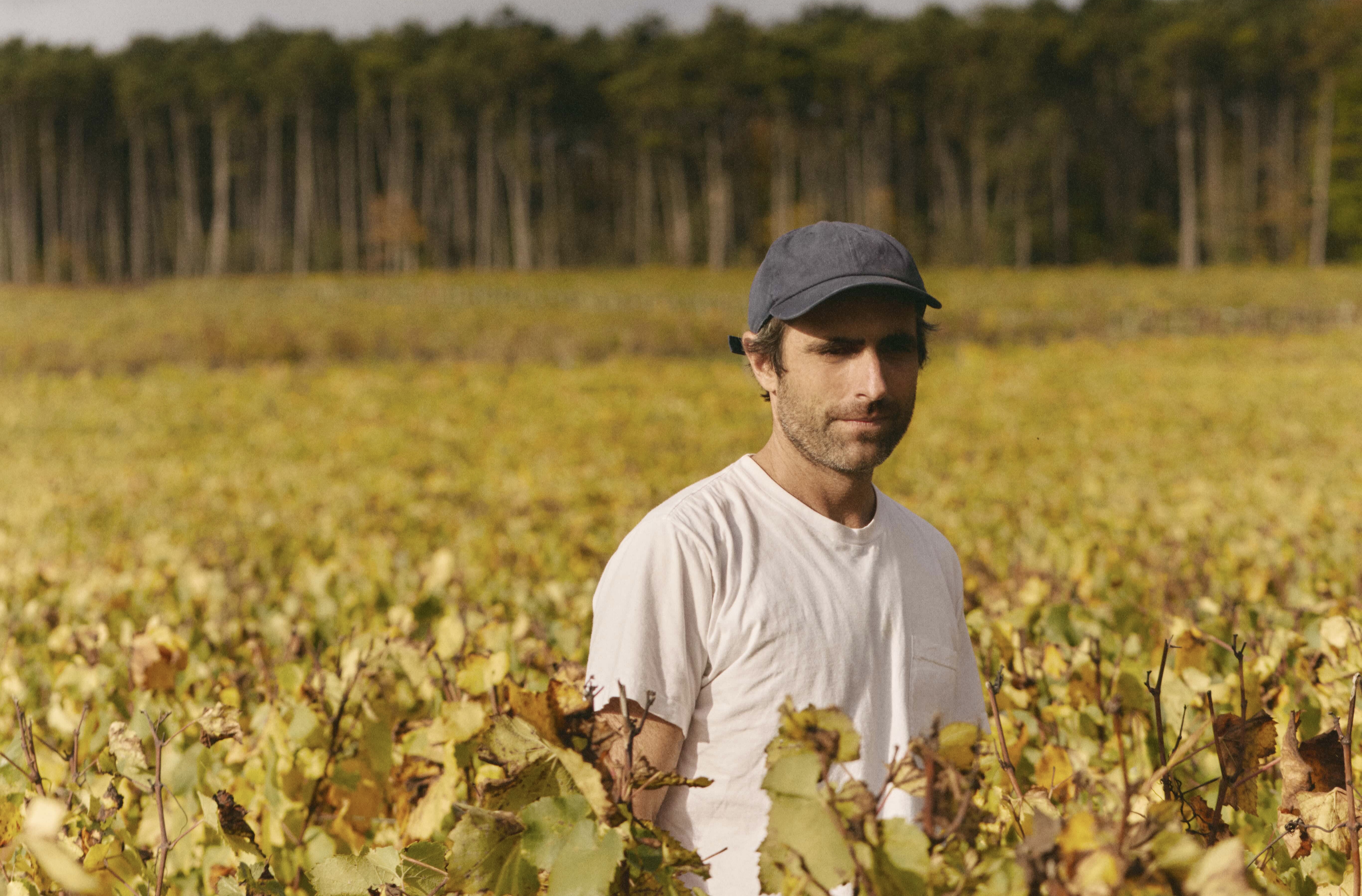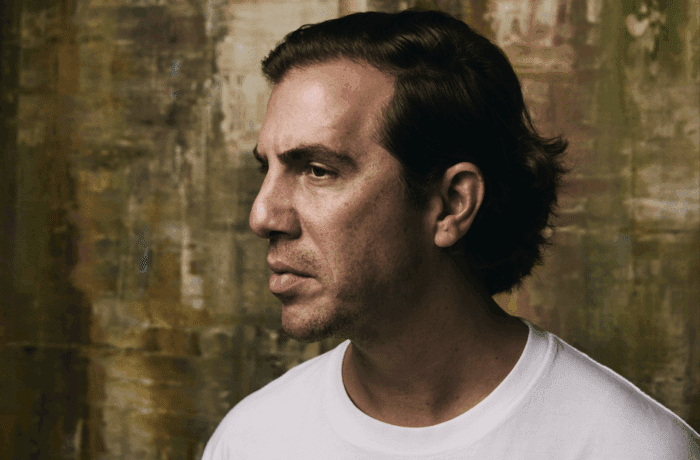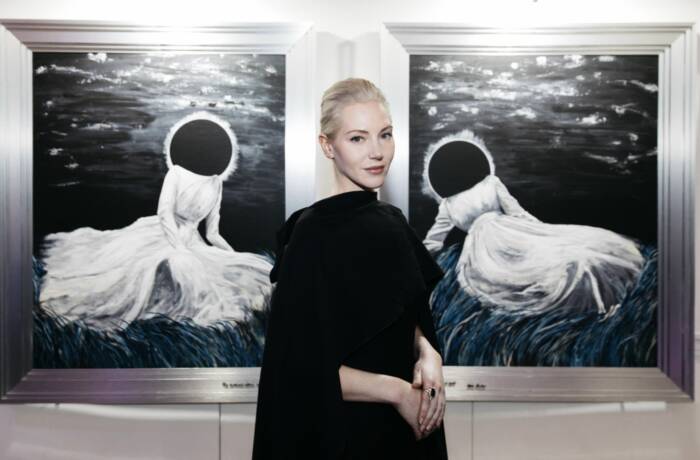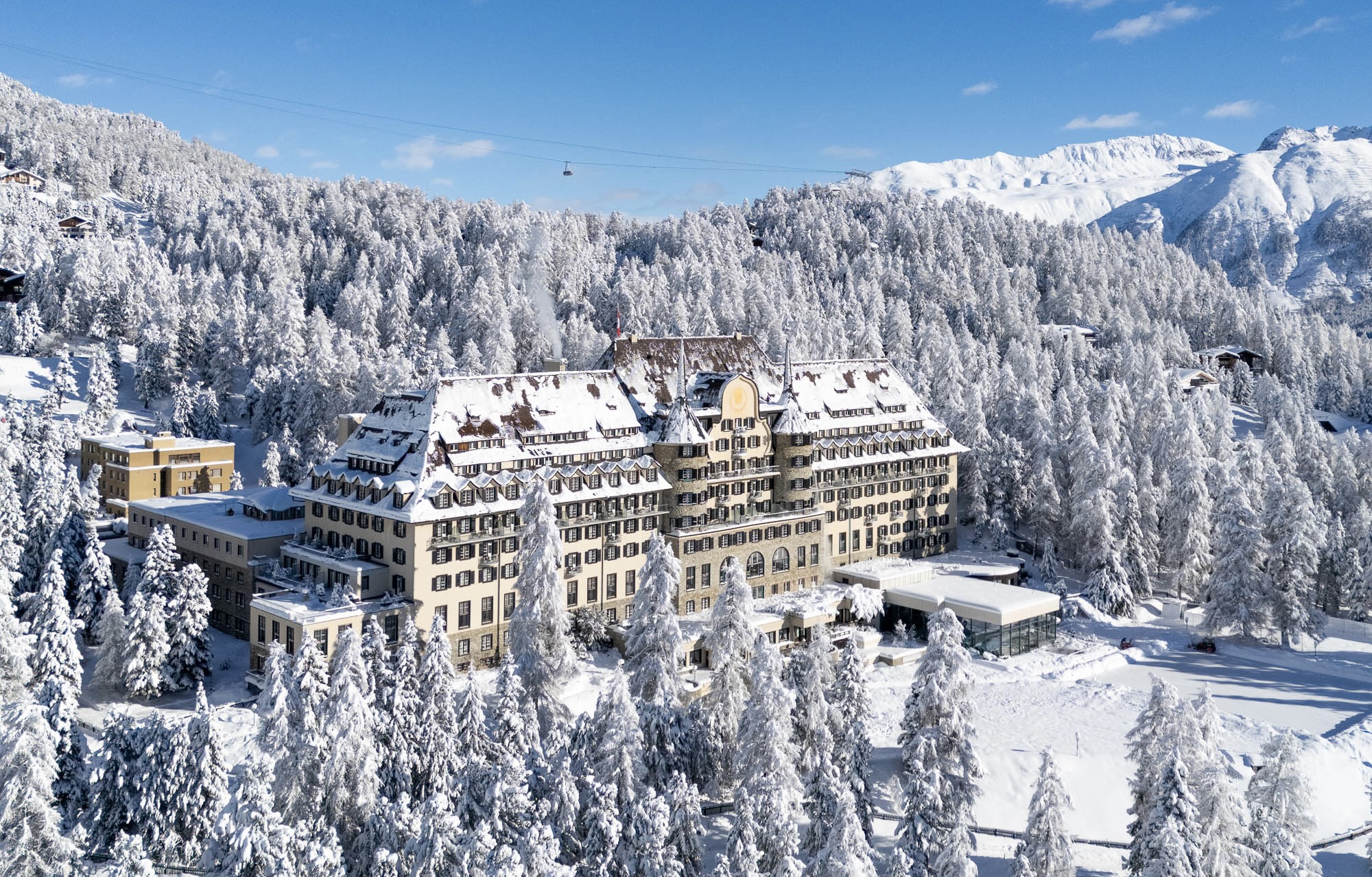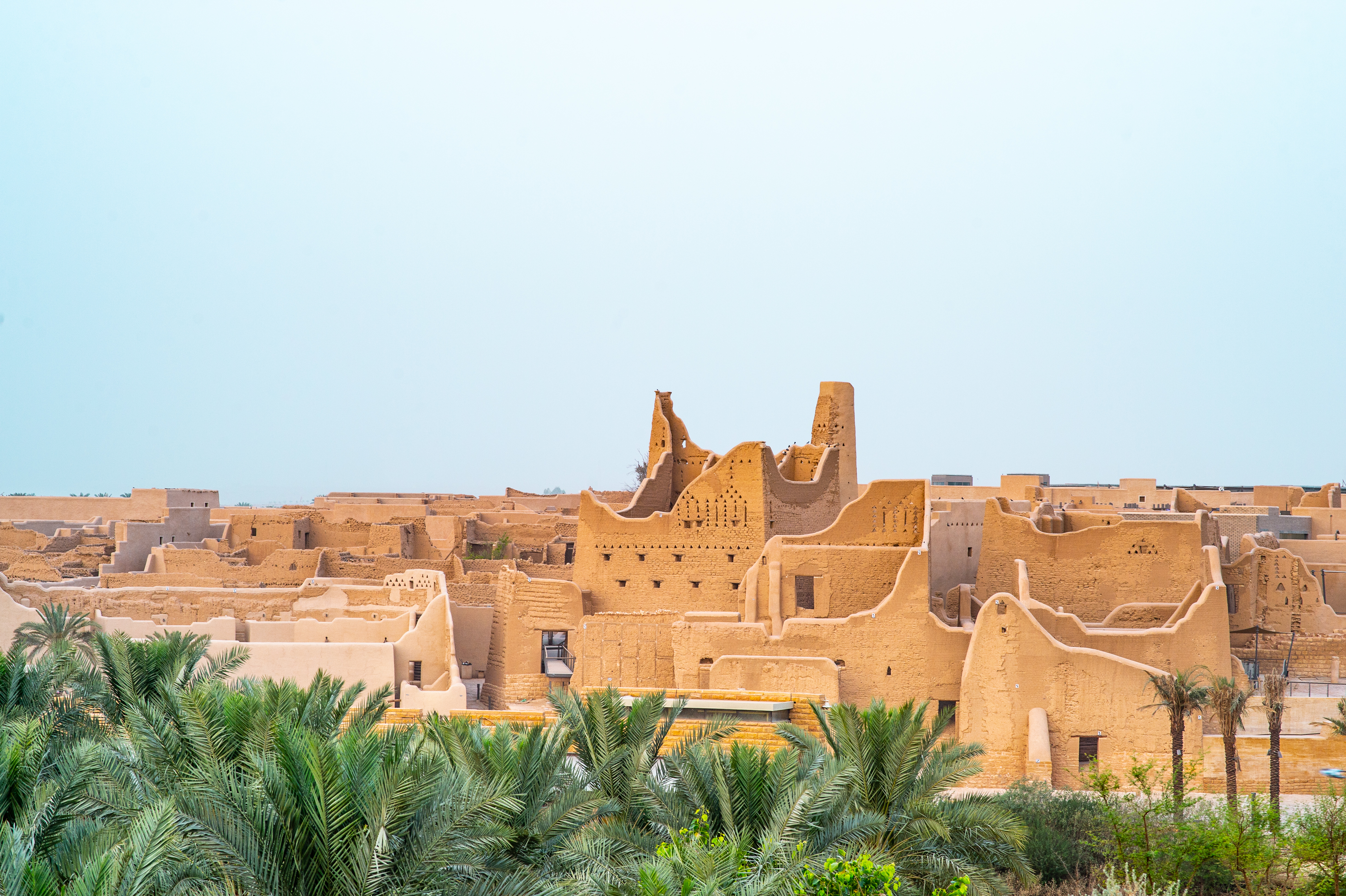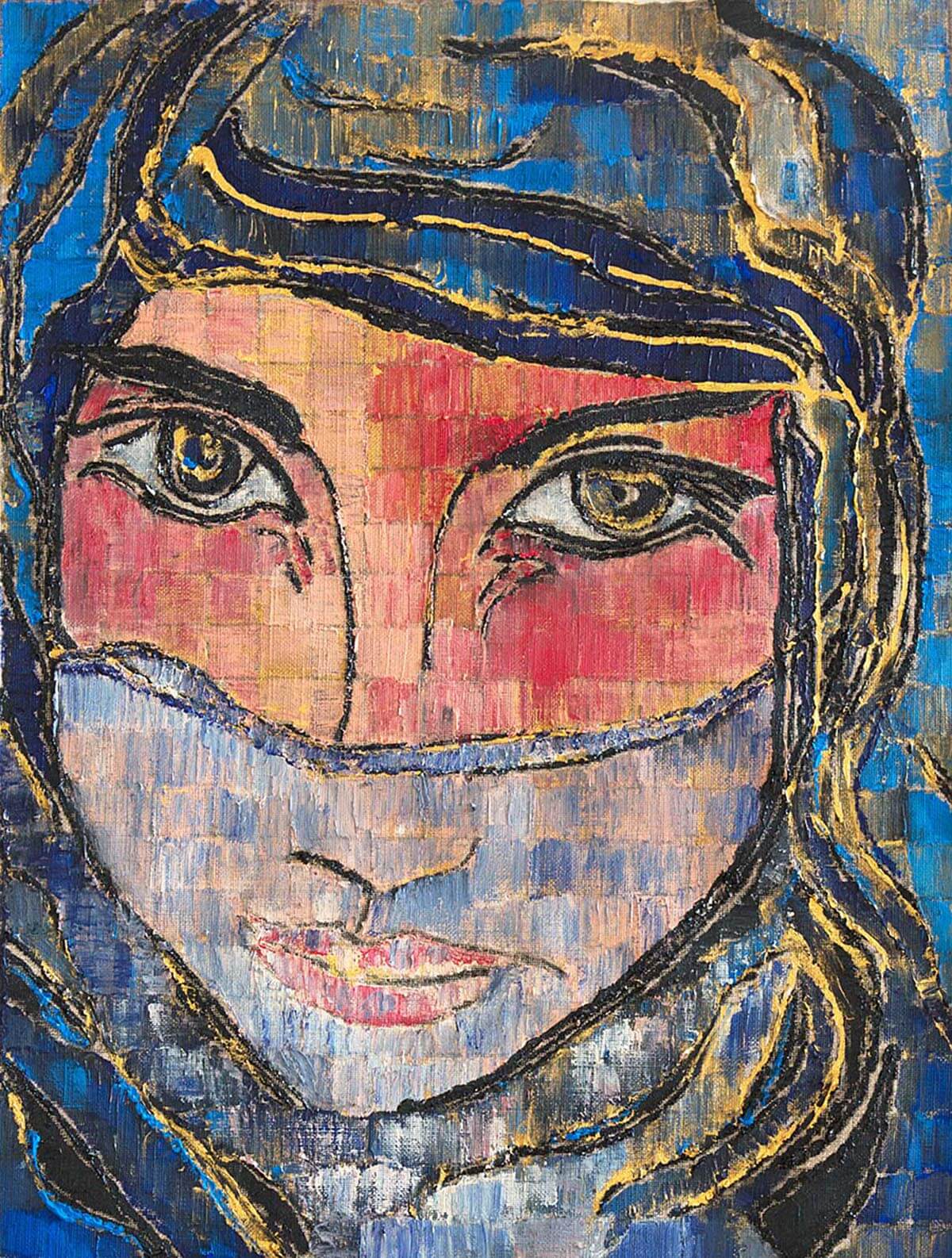
Portrait of a Berber woman by Ghizlan El Glaoui
Moroccan artist Ghizlan El Glaoui, daughter of renowned painter Hassan El Glaoui and granddaughter of Thami El Glaoui, the last Pasha of Marrakech, is fascinated with faces and finding beauty in the world. Editor-in-Chief Darius Sanai speaks to the artist about her artistic childhood, African art and her portrait wish-list.
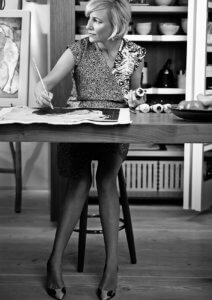
Ghizlan El Glaoui at work in the studio
Darius Sanai: How long have you been living and working in London?
Ghizlan El Glaoui: It’s been 21 years now. I studied and married in Paris and then decided to move to England due to a job offer for my husband. I’ve been here ever since – I like London and was so happy to move away from France. I am half French, but lived in Morocco for most of my life so the French was still foreign to me – even though I had a French mother. When I was in Paris, I suddenly realised that my French side of my personality was not as developed as I thought. I always felt like a foreigner to the Parisians. By experiencing Paris, I always loved people from the South and that the people from the North were very different, so I remained big friends with the South of France. But when I moved to London, I just thought, this is it.
Follow LUX on Instagram: the.official.lux.magazine
DS: You come from a great artistic heritage and you are both an artist and a collector, how has that developed? When did you start doing what and how did it all start?
GEG: I had an artistic father and grandfather. I was always surrounded by their art, influences and admiration of arts. I grew up with these passions. I became my father’s muse, posing for his portraits. My father was my first tutor and he knew of such amazing artists himself that I had 4-5 tutors in the room while watching him paint. You have to watch a lot when you’re posing there is nothing else to do, you can’t move, so I observed the way he was looking at me and all the other things around it as well. I have kept this passion of portraiture and so I started to have this need to express myself through artistic means. I was a pianist as well so I suppose it was evident that I had this ability with arts in general. This is why I wanted to study art in general in Paris. The academy I went to taught you art, but also prepared you for finding a job afterwards. Half of it was very intense art courses and the other half was learning how to make a magazine, learning about typography.
DS: When you were a student, did you think you would become an artist or was it just a passion?
GEG: It’s difficult to say. I was never really good at doing what I was asked to do, but what is interesting is that the project we had to do in our last year was about mosaic. We had to take an image and reproduce it on a much bigger scale. We had to cut the pain ourselves, into squares, and had to recreate that mosaic with different tones. I remember very well that I chose an incredibly good-looking model that was posing at the time for all the Armani perfume campaigns. His face was absolutely gorgeous! Since then I have readapted this technique to my own, now I don’t cut the squares, I paint them directly onto the linen.
I painted more after having kids, when I had the time to develop my artistic career. It has been a passion and a hobby for many years and only when my girls started going to school did I have the time to further develop the presence of my art in London, which I hadn’t done before. I was very present in St Tropez and other places where my name perhaps had more meaning. After Morocco, Madrid and other places, I thought London would be a good place. At the time, London was very British orientated in terms of art, focussing on British artists. As a foreigner, it was quite a trick to get into the English art world, so I didn’t want to try until I had proven myself in other places before. More recently, my sister opened the 154 African Art fair which has been hugely successful, so there clearly is international demand for top African artists.
DS: African art is a very broad definition, is that how you define yourself?
GEG: Not at all. I paint beauty, that’s how I define it. On the subject of African art, the King of Morocco is trying his best to create an Africa where Morocco is included. I think Morocco is very different to other places in Africa. It has so much history and culture. I think it’s a very special place and should remain as such. Everybody wants to collect African art now, my sister started it, and at the time nobody wanted to go to her first show. Now, the trend is so big that even Sotheby’s and Christie’s are telling you about their African collections that apparently they have had for years, but never showed. Suddenly they are all becoming experts! Obviously, it is incredibly important to show art from African artists, as it should be seen by everyone around the world.
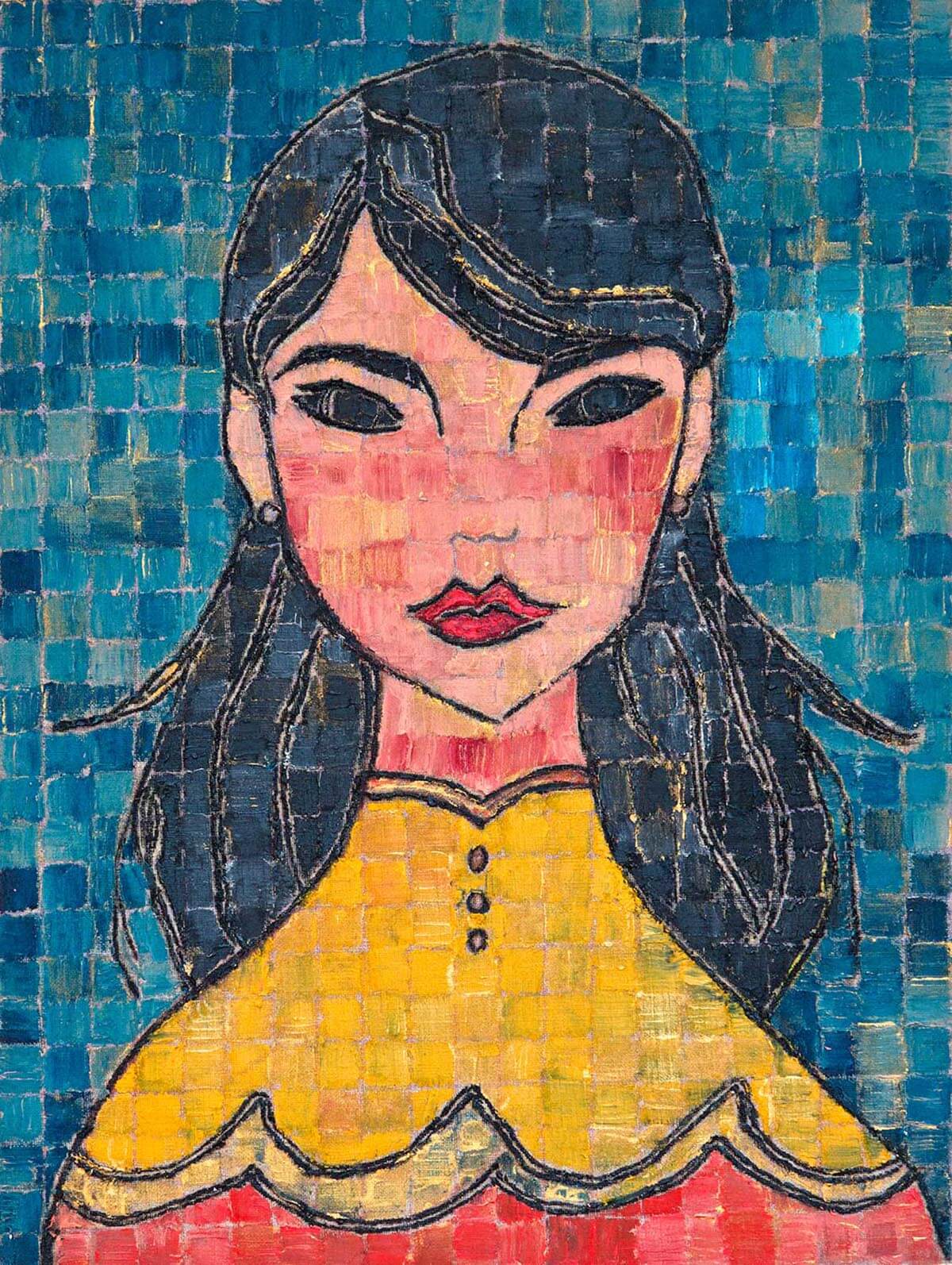
Blue Blossom by Ghizlan El Glaoui
DS: Do you define yourself as Moroccan or a school of Moroccan art? Is that more accurate?
GEG: I would say, my father always had a fight with the school of Moroccan art, because they never gave him the credit of Moroccan art. They always got jealous, as he was in Paris and had incredible links and connections with artists, even before he was 30. They never considered him as an official part of the Moroccan trend of artists. They put him aside and excluded him in exhibitions in the past. They were very worried that my father has a special position. I do think he deserved it and he did have it. He’s been so successful and has been so incredibly grateful to his country – making it shine all over the world – he’s done that through his talent. To watch him and his career at this stage, I can only be very proud.
Darius Sanai: Would you put yourself in the same category?
Ghizlan El Glaoui: I cannot. I have his art on my walls! I think the big force of my father was that he was so modest. He never believed a painting was finished and he never wanted to sell his art – he was very shy of being in the limelight.
DS: How do you artistic styles compare?
GEG: I took all the positive things that I had learned from my dad and my method has been the same since art school. I paint the same square method and my technique, which is from art school onwards, is to paint on the other side of the canvas, because I don’t like white – it does not inspire me. This comes from my dad as well, his teacher would always prepare the back of the painting before she decided what she was going to paint on it. She would use all the old tubes and palettes to create the next painting, so she wouldn’t waste any paint – everything would be used. We have a cat at the house, which everybody loved. The teacher created a grey background and then she decided to put that cat on it, it looked so incredible! It stayed with me that you have to prepare your background before you paint it.
Many years later, I discovered the light for the background of my paintings – day light, night light, because I wanted my paintings to show different faces. I then realised I could put lights behind it and achieve as many faces as I wanted – not just day and night by this incredible engineering of light. I was also always really fascinated by mosaics in churches and how the light would come through the glasses. I think my artistic style represents who I am and where I come from, it stands for everything I like which I’ve melted together. My technique is based of all my inspirations, melted together and I’m always trying to represent beauty. I think there are so many horrors in the world that we now live in, so it is the artist’s job to bring joy and pleasure. I’m not an artist who destroys beauty – I’m not Picasso. There are so many perfections, to me, in the world. I need to make everything beautiful. This is what I do when I tackle a project. Right now I’m doing a series on Indians in America and make them shine again – giving them their moment, because we always forget how we built our new world; it was by destroying another race. I want them to shine again with their culture, their beautiful costumes, their attitudes, their pride – so many things I admire from this population.
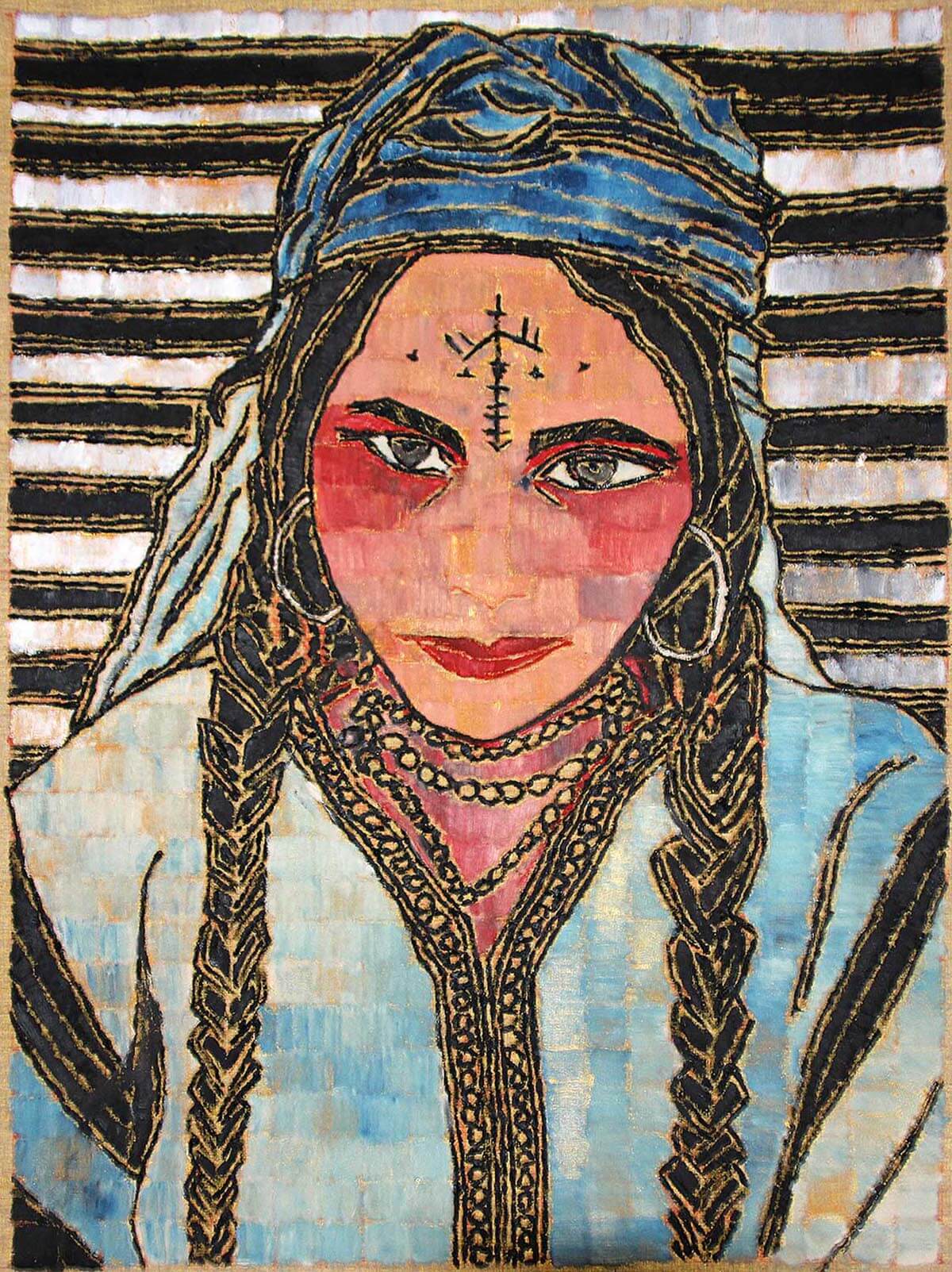
Portrait of Berber woman by Ghizlan El Glaoui
DS: Where do you take inspiration? Where do you get your ideas from?
GEG: That’s a very good question. I have waiting lists in my mind of people I plan to paint one day. Some days I think about the news and that will make someone move up in the list. Sometimes I look at my past work to maybe develop those ideas. I have a friend who works at Dior now, so I’d like to look at this vintage fashion dresses from Dior – that could be an interesting project to work on. My ideas come from lots of different things. Charlie Chaplin is on my list. I haven’t done many men yet. I’d also like to paint Winston Churchill with his cigar.
DS: You mention beauty, is this very important for your art?
GEG: Yes, I have a big sense of aesthetic beauty. My mother thought we were all muses of Botticelli and her passion of art, I think, influenced her children – we even looked like Botticelli models with the same type of hair. I think my interest is a combination of my mum’s aesthetic and my dad’s aesthetic. My need for beauty is from my childhood. There were also beautiful mosaics everywhere in our buildings, my mum had a big collection of furniture so I was lucky enough to always be surrounded by lovely things and I want to reproduce this beauty.
DS: And what are you most excited about creating for next year?
GEG: I would like to do a beautiful exhibition of Berber ladies from the south of my country, Morocco.
